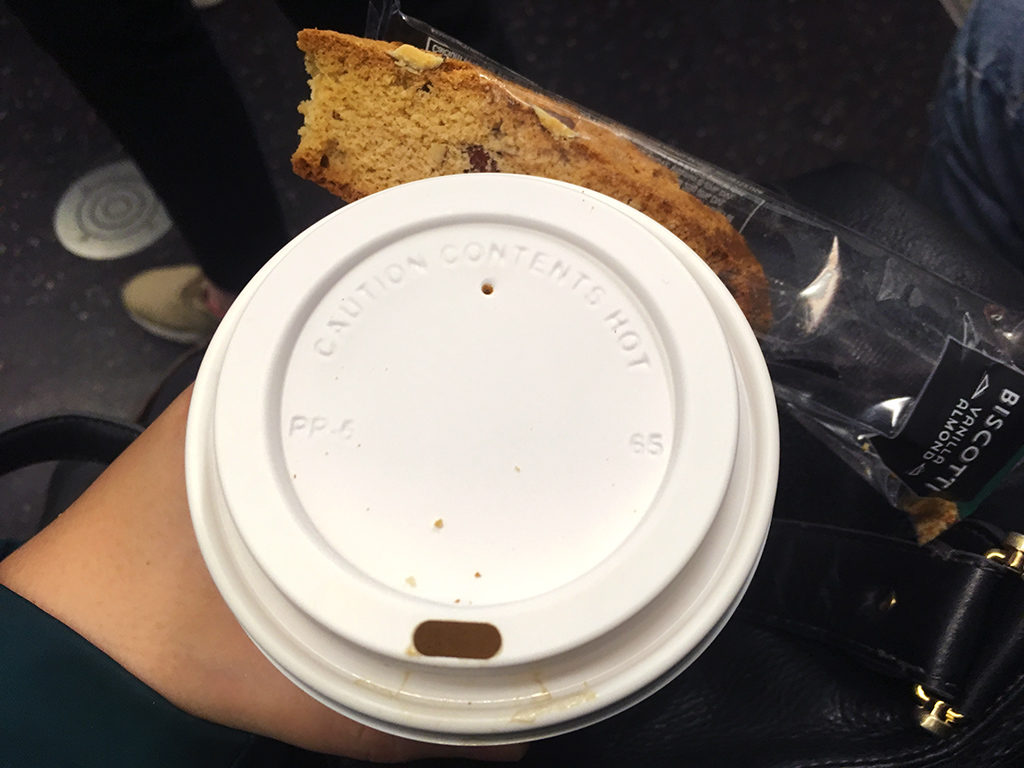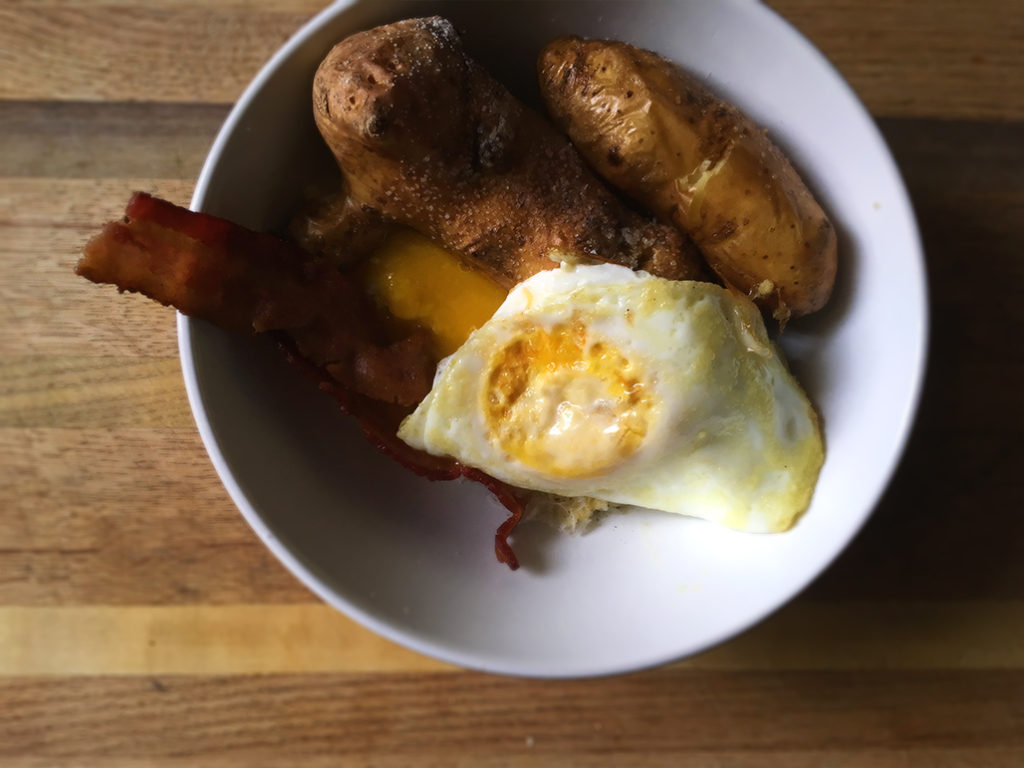 The coffee available at Starbuck’s is another result of the massive Italian immigration to the U.S. All the lattes and espressos are thanks to Italians!
The coffee available at Starbuck’s is another result of the massive Italian immigration to the U.S. All the lattes and espressos are thanks to Italians!
This morning, for the first time in my life, I finished a full cup of coffee. On coffee, Sophinisba said: “The coffee is made strong but is served with hot milk the cup half or two thirds filled with milk before coffee is poured in. Very often nothing is eaten with the coffee.” Based on her description, I ordered a cafe latte at Starbucks. I had a biscotti, too, since Sophnisba said Italian cookies were also often a part of breakfast.
My first sip of coffee was shockingly bitter; but it reminded me of my grandfather. He’s the only person in my family that drank coffee, and I remember how to smell filled the house when I stayed over with him and grandma when I was a kid. It also felt like I was taking my medicine–caffienating after two nights of restless sleep.
I ate and drank my cafe latte on the subway; I had camped out at a close friend’s the night before. I was feeling too heartbroken to be alone.
Luncheon
Egg tamale (egg, cheese and bacon).
Baked potatoes. Bread. Fruit.
The egg tamale is a dish that really had both Jill and I stumped as to what it could be. I thought perhaps this was some American recipe, but searched cookbooks from the time to no avail. Tamales were a very popular street food in the early 20th century, so I got to thinking, maybe Sophinisba is seeing a food she doesn’t recognize, and is using a term she does know to describe it. So tamales are corn…maybe this was a polenta dish? Polenta is a Northern Italain staple, as opposed to Southern. But in America’s Little Italies people from all over Italy were meeting, and their foodways were combining. Plus, it’s got good ol’ American bacon on it. So I made what is my best guess for this dish: polenta, topped with grated Parmesan cheese, a fried egg and bacon. I also baked a few potatoes, and had a banana. Bananas were super common and considered super american. But I skipped the bread. It was enough food as is.
Dinner
Soup with macaroni.
Meat with vegetables (potatoes, carrots, cabbage, onions etc.)
Bread. Fruit.
 It looks more like a random collection of food than a meal, but I promise it tasted very good.
It looks more like a random collection of food than a meal, but I promise it tasted very good.
I had left over lentil soup and macaroni from Tuesday, so I combined them with an extra ladleful of tomato sauce to make Soup with macaroni. I roasted a mess of veggies–exactly what she listed–with salt and olive oil. And I had a special guest for dinner: Jeffrey Marsh, LGBTQ activist and fellow author. And vegan! He wanted to get together and I had a sudden realization that he could eat everything I was preparing for dinner. The meals, you may have noticed, are really light on dairy. Southern Italians used used olive oil, not butter, and just a smattering of cheese here and there. I served myself the last of my roast chicken, and Jeffrey supplied the bread, as well as the apple and pear we split for dessert.
We talked about the election and how to move forward. I don’t know if I have any revelations to share with you, other than a promise to be a good person, and try to do good things for the world. I’m gathering money to donate to causes I believe in, investigating what organizations to join to become more politically active, and taking steps to try to amplify my voice as an advocate for an inclusive America.
I feel it’s so important to be proactive, because as a historian, I know that history can repeat itself. America did NOT welcome Italian immigrants with open arms. Take a moment to read this article about the history of racism and violence against Italians in America, and about the Immigration Act of 1924 that virtually banned Italian immigration to this country, a “legislative expression of the xenophobia.” Just 5 years after Sophnisba Breckenridge observed this Sicilian family’s dining habits, Italian immigration to America came to a standstill.


I found this series via Facebook and I’ve really enjoyed reading about what these families would have eaten. My great-grandmother immigrated to the US as a girl with her family from Southern Italy. My nana was born in 1915, so I imagine in 1919 she may have been eating similarly to these families. I don’t know much about my family’s history but these posts are giving me some insight into what it might have been like for them.
I too am having a hard time this week – I appreciate you continuing this Italian experiment and I’m glad I found it.
Thank you for joining me!